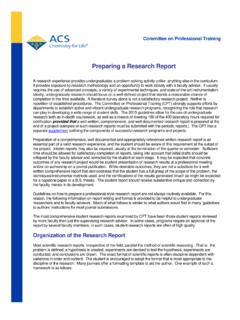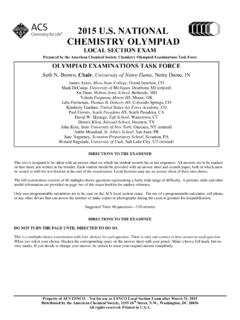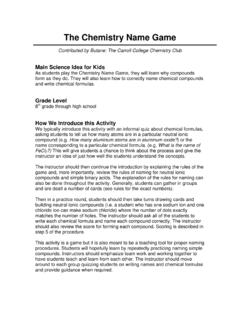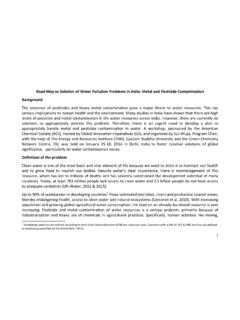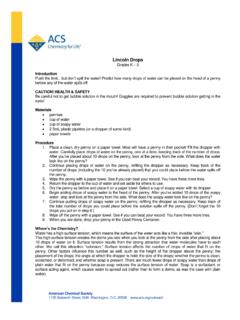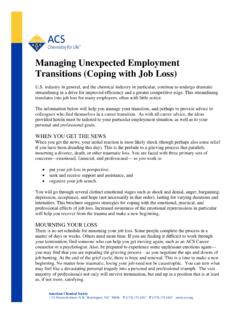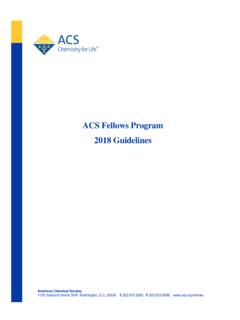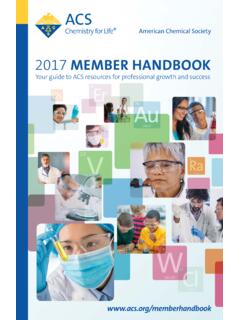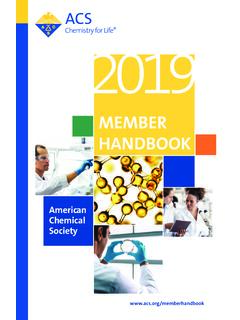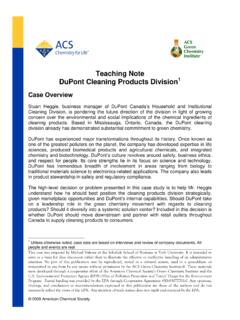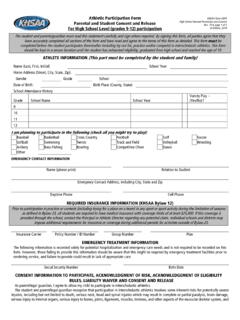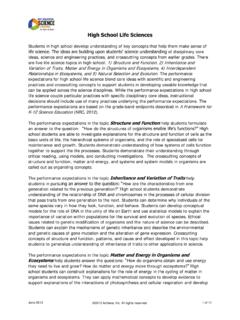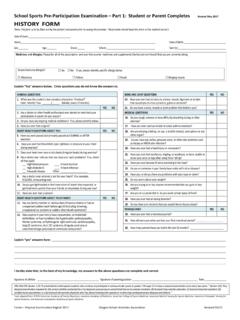Transcription of Recommendations for the Teaching of High School …
1 ACS Guidelines and Recommendations for the Teaching of high School Chemistry Spring 2012. American Chemical Society Society Committee on Education American Chemical Society 1155 Sixteenth Street, Washington, DC 20036. Published by The American Chemical Society 1155 Sixteenth St., NW. Washington, DC 20036. An electronic version of this document and additional information are available at: Cover images from The following guidelines have been prepared with the objective of improving the standards and the quality of high School chemistry education in the United States. These guidelines have been developed from sources that are considered to be reliable and that represent knowledgeable viewpoints of chemistry education.
2 No warranty, guarantee, or other form of representation is made by the American Chemical Society (ACS) or the American Chemical Society Committee on Education (the Committee ), or by any of the Committee's members concerning these guidelines and their use. The ACS and the Committee hereby expressly disclaim any and all responsibility and liability concerning the use of these guidelines for any purpose. This disclaimer applies to any liability that is, or may be incurred by, or on behalf of the institutions that adopt these guidelines; the faculties, students, or prospective students of those institutions; and any member of the public at large; and includes, but is not limited to, a full disclaimer of any liability that may be incurred with respect to possible inadequate safety procedures taken by any institution.
3 AMERICAN CHEMICAL SOCIETY AMERICAN CHEMICAL SOCIETY. Table of Contents Introduction 2. Pathways to Learning 3. Expected Student Outcomes in a high School Chemistry Course 3. The Big Ideas That Must Be Explored in high School Chemistry 4. Effective Strategies for Teaching Chemistry 5. Teaching Students of Diverse Backgrounds and Various Levels of Academic Ability 8. The Laboratory Experience in high School Chemistry 9. Applying Technology in high School Chemistry 11. Using Assessments to Improve Instruction 12. Physical Plant 14. The Classroom 14. The Laboratory 14. Prep Room and Chemical Storage Closet 17.
4 Professional Preparations and Responsibilities 19. Equity 19. Ethics 20. Professional Development 21. Professional Organizations and Resources 21. Extracurricular Activities 22. Acknowledgements 24. References 27. Glossary of Acronyms 28. Introduction I. n the fall of 2009, the American Chemical Society (ACS) Education Division, under the auspices of the Society Committee on Education (SOCED), established and charged a task force to update a guidance document, titled ACS high School Chemistry Guidelines and Recommenda- tions, which was last revised in 1984. The purpose of this document is to provide guidance to the high School chemistry education community focus- ing on the nature of the instruction, including the physical and instructional environment, the big ideas in chemistry, and the professional responsibilities of chemistry teachers.
5 This document is not a course outline or syllabus, a detailed description of instructional methodologies and best practices, or a program outline for teacher preparation and professional development. The intent is to capture the importance and value of Teaching chemistry at the high School level and to emphasize the essential components of the high School chemistry learning environment. The primary audience for this document is high School chemistry teachers, their supervisors and principals, and School administrators. This document should also serve as a resource for pre- and in-service teacher preparation programs.
6 The focus of this document is to describe the broad requirements necessary to teach chemistry to all high School students from diverse populations. These guidelines recognize the professional integrity of high School chemistry teachers who may want to share with their School or district administrators information about best practices and the physical environment, including the tools of educational technology and laboratory facilities. These guidelines are presented in order to support the work of classroom chemistry teachers. 2. Pathways to Learning Expected Student Outcomes in a high School Chemistry Course Since at least 2001, states have been developing and validating specific science standards to be learned.
7 In nearly every case, these state science standards were influenced by two national-level publications, the National Research Council's (NRC) National Science Education Standards (NSES). (NRC, 1996) and the American Association for the Advancement of Science's Benchmarks for Scientific Literacy (AAAS, 1993). The NSES defines scientific literacy as the ability to: 1. Ask, find, or determine answers to questions derived from curiosity about everyday experiences;. 2. Describe, explain, and predict natural phenomena;. 3. Read and understand articles in the popular press and engage in social conversation about the validity of the conclusions.
8 4. Identify scientific issues underlying national and local decisions and express ideas that are scientifically and technically informed;. 5. Evaluate the quality of scientific information on the basis of its sources and methods; and 6. Pose and evaluate arguments based on evidence and apply conclusions appropriately (NRC, 1996). The NRC defines scientific literacy as an approach to scientific understand- ing, or an ability to evaluate physical phenomena. Teachers of high School chemistry should strive to model and emphasize the inquiry, scrutiny, and information-sharing that is fundamental to the practice of science.
9 Anyone can find the numerical value for the specific heat of water. However, scien- tifically literate chemistry students should be able to describe the concept of specific heat, and how the value could be investigated, verified, or applied. Students should also be able to carry out such an investigation. To promote scientific literacy, an outstanding high School chemistry curriculum will expose and engage students in activities that involve problem solving and critical thinking. Students should acquire an appreciation for the interactions of matter at the macroscopic level, the atomic level.
10 When we witness a fire a macroscopic event we sense heat, light, and the motion of air surrounding the fire. In the mind's eye of a chemist, at the atomic level, he or she sees oxygen molecules and carbon-rich molecules colliding at high velocity to produce car- bon dioxide and water, among other things. 3. Students should develop an ability to investigate and verify scientific information. They must be required to communicate scientific ideas as part of their academic experience. These essential elements of a high School chemistry curriculum will help students make informed decisions about relevant scientific issues.
